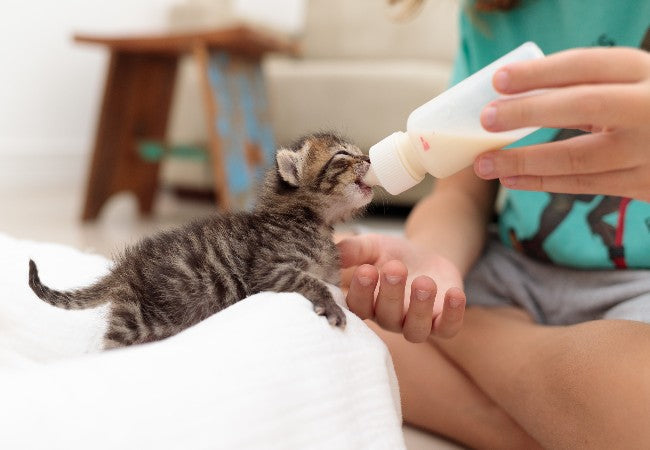Feeding Kittens Naturally Vet Approved Guide from Weaning to Adulthood🐶✨

In this article
Feeding Kittens Naturally Vet Approved Guide from Weaning to Adulthood🐶✨
By Dr. Duncan Houston BVSc
Kittens grow fast—and what you feed them in their first year shapes their health for life. Whether you’re raising rescue kittens, a new litter, or a solo fluffball, it’s vital to give them high-quality, natural nutrition to support bone growth, immunity, and healthy digestion.
I’m Dr. Duncan Houston, veterinarian and founder of Ask A Vet. Here’s how to feed your kitten naturally from weaning to adulthood, without the confusion of marketing claims or risky DIY diets.
📅 Kitten Feeding Timeline
- 0–4 weeks: Mother’s milk or kitten formula only
- 4–5 weeks: Begin weaning with soft, blended food
- 6–8 weeks: Fully on wet or natural food, 4–5 meals/day
- 3–6 months: 3–4 meals/day, high protein + energy
- 6–12 months: 2–3 meals/day, transition to adult portions
✅ What Kittens Need in a Natural Diet
1. High-Quality Animal Protein
- Chicken, turkey, rabbit, lamb, duck, or fish (cooked or raw, balanced)
2. Healthy Fat for Growth
- Chicken fat, fish oil, goat milk – for energy, coat, and brain
3. Calcium and Phosphorus in Balance
- Essential for bones and teeth – often missed in DIY diets
- Use commercial-balanced raw or cooked diets OR vet-formulated recipes with supplements
4. Taurine, Vitamin A, B12, Zinc
- Crucial for vision, heart, and immune development
- Must come from animal sources or complete supplementation
📋 Sample Natural Weaning Meal (6 Weeks Old)
- 50g cooked chicken or turkey (minced)
- 2 tsp goat milk or warm broth
- Optional: probiotic powder + kitten vitamin blend
- Serve warm and mashed into a soft consistency
🍽️ Feeding Tips for Growing Kittens
- Always serve food slightly warm—not cold from the fridge
- Use shallow dishes to encourage easy eating
- Offer water and wet meals—hydration is essential
- Weigh kittens weekly and adjust food amounts as they grow
🛑 What to Avoid
- Feeding adult cat food or dog food (missing key nutrients)
- Giving only meat without bone, organs, or balance
- Milk substitutes not designed for kittens (cow’s milk = diarrhea)
- Feeding raw without knowing the calcium, phosphorus, and taurine levels
🔗 Tools from & Ask A Vet
- Ask A Vet – Upload your kitten’s diet, weight chart, and feeding questions for real vet advice
📋 Summary Excerpt
Kittenhood sets the stage for life. A vet explains how to feed your kitten naturally—from weaning to adulthood—using high-quality protein, fat, and vet-approved balancing for safe, strong growth.
❓ FAQs
-
Q: Can kittens eat raw food?
A: Yes—but only from balanced commercial sources or recipes created by a vet. DIY raw is risky during growth. -
Q: How often should kittens eat?
A: 4–5 times/day under 4 months old, then 3–4 meals until 6 months, then 2–3/day after that. -
Q: Do kittens need supplements?
A: Only if you’re feeding homemade. Most commercial kitten food (wet or raw) is balanced. Ask your vet before adding anything.






